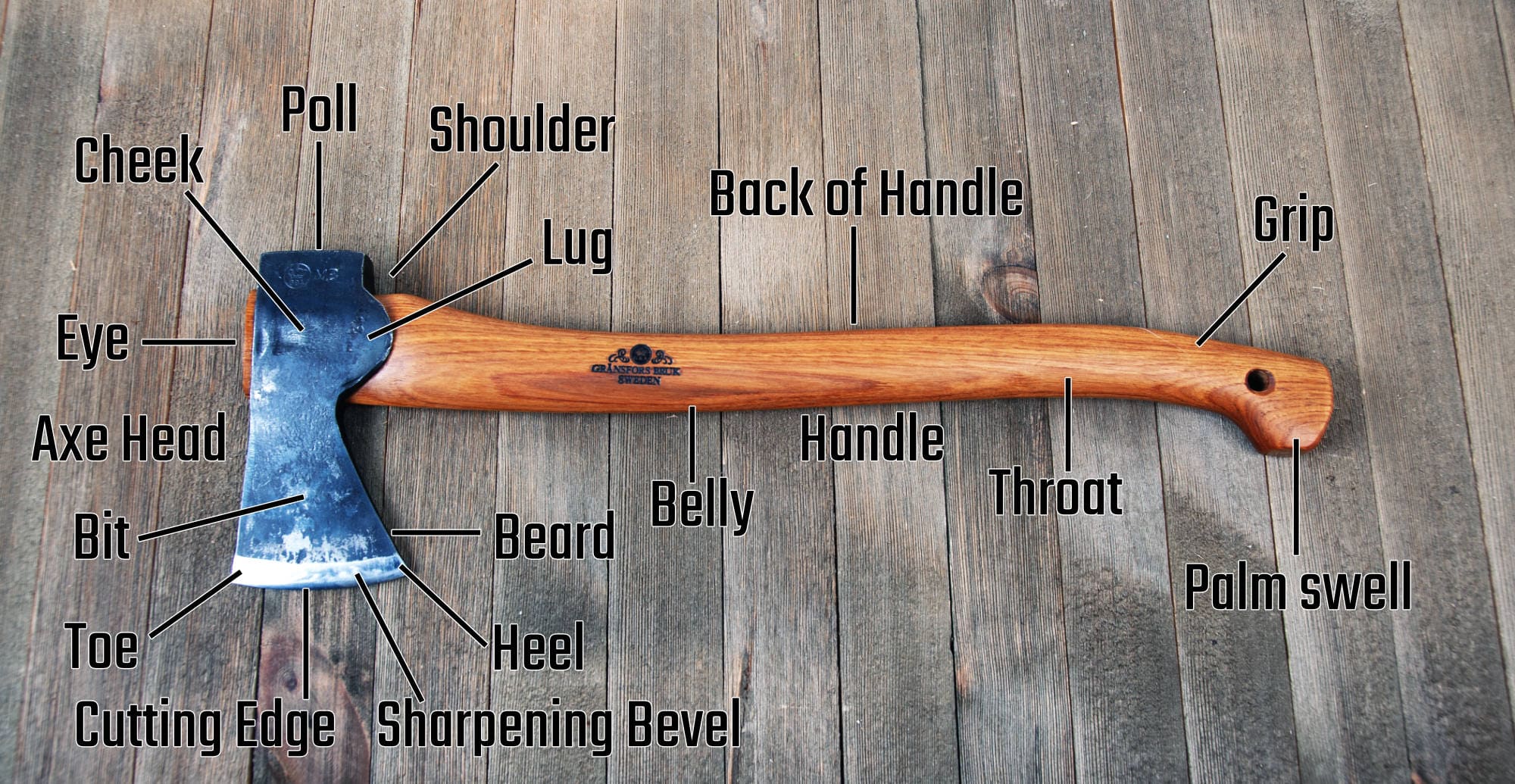An axe is just a metal wedge on a stick right? Hardly. There are many parts of an axe from poll to palm swell and bit to butt. The design of each of these elements creates a unique purpose built tool. The below details what each part of an axe is called.
Head (axe head) – the entire (typically) metal portion of the axe
Poll (butt) – the portion of the head opposite the bit, often not hardened, but still useful for striking wooden stakes or polymer wedges
Shoulder – the portion of an axe haft that flares out just below the head
Cheek (axe side) – the sides of the axe below the eye and above the lugs
Eye – the hole of the axe head through which the haft (or handle) passes
Toe (lower corner) – the top corner of the bit

Lug (axe lip) – the portion of the axe that plunges below the poll
Palm swell – the flared portion of the haft
Bit (axeblade) – the blade of the axe
Cutting Edge – the sharpened portion of the axe
Sharpening Bevel – where the bit begins to taper before forming the cutting edge
Heel – the lower corner of the bit
Beard – the portion of the axe bit that plunges down below the lugs or cheek
Handle (haft) – the handle of the axe, typically made out of wood, although some axes will have metal or composite hafts. The handle has various parts such as the palm swell, grip, throat, back, belly and shoulder
Elaboration on the parts of an Axe
Lugs (axe lip) – What is the purpose of lugs on an axe? They increase the amount of contact the axe head has with the handle and helps keep the head snug and secure. They also look great!
Palm swell (end knob, swell knob) – this helps keep an axe wielder’s hands from sliding off the end of the handle. The hole in the palmswell is for handing the axe up when not in use. Keeping an axe propped on it’s side at an angle over very long periods of time can actually put a bend in the wood.
Eye – the eye of the axe is actually wider at the top of the axe head than the bottom. That way when the axe head is hung on the haft, and wedged, the top will mushroom out and ensure the haft stays in place.



